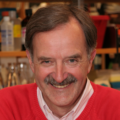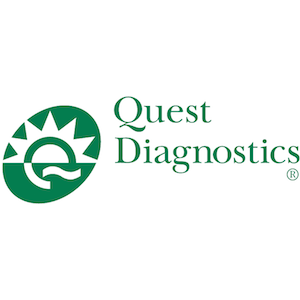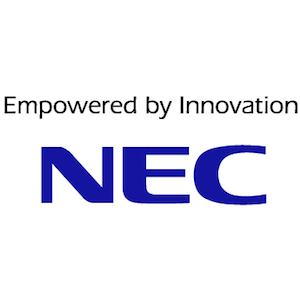2012
Time: Tempus Fugit
The 2012 symposium recognized that healthcare and its related sciences present a huge systems problem and that solutions lie not only in scientific innovation and discovery, but also in political action and the transformation of healthcare delivery at both the individual and societal levels.
View Program
-
-
Opening Remarks 2012
Dr. Larry Gold is the Founder and Chairman Emeritus of the Board, and former CEO of SomaLogic. Prior to SomaLogic, he also founded and was the Chairman of NeXagen, Inc., which later became NeXstar Pharmaceuticals, Inc. In 1999, NeXstar merged with Gilead Sciences, Inc. to form a global organization committed to the discovery, development and commercialization of novel products that treat infectious diseases.
-
-
OMICS again: Proteomics, Metabolomics, IPomics, and Narcissomics
-
Exploring the Human Protein Atlas to Study Biology and Disease
The human genome has approximately 20,000 protein-encoded genes. An import quest for the future is to characterize the expression, localization, and modification of all the human proteins. The current version 9.0 of the Human Protein Atlas (www. proteinatlas.org) contains more than 15,000 validated antibodies targeting 12,200 genes corresponding to more than 60% of the protein-encoded genes in humans. The Protein...
-
Supersystems Biology and Systems Medicine in the Clinic: A Translational Journey
Systems biology tools are now being applied at individual and population levels to understand integrated biochemical function of complex organisms including man. Metabolic phenotyping offers an important window on systemic activity and both NMR and mass spectrometric methods have been successfully applied to characterize and quantify a wide range of metabolites in multiple biological compartments to explore the biochemical sequelae...
-
Novel Models of Biotech IP Licensing: How Early Can it Start?
Dramatic events in the Intellectual Property (IP) world of the past 18 months have created a new landscape. These included passage of the America Invents Act (new patent law), Nortel patent auction sale for $4.5 billion, Google acquisition of Motorola for its patents for $12.5 billion, and a series of fundamental federal and Supreme Court decisions. Coupled with changes in...
-
The Limits of Evidence Based Medicine
The term “evidence-based medicine” was originally used to describe the broad scientific and experiential underpinnings of medical practice, as opposed to personally held views, limited personal experience, or “how I was taught.” Unfortunately, it has become a faddish term to describe the focus on randomized trials and meta-analyses as the primary drivers of medical practice. The term is now used...
-
-
Drug targets and development: Mitochondrial efforts, biotech/pharma successes and risks
-
Photothermal Nanoblade and Nucleic Acid Import into Mitochondria: Can We Improve Bioenergetics for People?
Numerous diseases result from mutations within the mitochondrial genome. A functional decline due to mtDNA mutations could lead to reduced oxidative phosphorylation and other untoward effects on mitochondrial activities. Strategies that restore mitochondrial function could potentially diminish the ill effects of mitochondrial-driven diseases. In this presentation we will discuss two strategies for repairing mtDNA mutations. In one approach we are...
-
Drp1: A Link Between ER Stress and Apoptosis
Live imaging of mitochondria with fluorescent probes unraveled their restless shape restyling all along cell life. Chopping and reconstructing of mitochondrial membranes was soon attributed to large GTPases of the dynamin family and appeared to accompany crucial pathways, from the distribution of mitochondria to daughter cells during cell division, to making release of proapoptotic molecules from mitochondria easier during programmed...
-
Genetic Nonsense: From Bench to Bedside
The genetic code includes specific “start” and “stop” signals that respectively demarcate the beginning and end of the information comprising a gene. Mutations that cause premature stops are called nonsense mutations and genes which harbor such mutations are essentially nonfunctional. Such genes still produce messenger RNA (mRNA), the template for protein synthesis, but cellular quality control pathways ensure that their...
-
Opportunities and Challenges in Translational Therapeutics
While the number of new therapeutics approved by the FDA has remained relatively constant over the past 60 years, the cost of this endeavor has increased in a log linear fashion. This mainly reflects the exploding cost of failure of a model that is clearly unsustainable. Experience in the altruistic sector has illustrated the temporal and scientific efficiency of a...
-
-
Health 101, education, and immunology
-
Peptides, Drug Discovery, Serendipity, and Basic Science
Peptides are amazing molecules. In the body peptides are used as chemical messengers to signal between cells as hormones (such as insulin) and neuropeptides (endorphins). Peptides are also used as toxins to defend us against bacteria, and in other species, to kill predators or prey. In addition to these roles for endogenous peptides, synthetic peptides have been used as research...
-
The Challenge of Healthy Living
The high rate of obesity in the US and worldwide is a marker for unhealthy lifestyles. These lifestyles are leading to chronic diseases such as diabetes, heart disease and cancer and are driving up health care costs. They also are reducing quality of life for many people. While almost everyone would like to be healthier, and despite the high awareness...
-
Alternative Pedagogy for the Scientifically Refractive Learner
Teaching in the 21st century brings many challenges, but none more than the population of students who seem to actually try to NOT learn. This is particularly apparent in the non-majors Biology courses, but also, seemingly inexplicably, appears in the majors courses as well. Even more frustrating is the presence of these learning refractory students in upper division biology courses....
-
Vaccines: How They Work and Whether They are Good for You
Vaccines are universally used to prevent certain infections or pathology caused by certain bacterial products -- for example diphtheria toxin. In order to do their job, vaccines must contain not only a portion of their target infectious agent but also an adjuvant. In the past adjuvants have been used quite randomly in different vaccines and without any knowledge of how...
-
-
Aging, chronic diseases, and evolution of healthcare
-
Biomarkers for Alzheimer’s disease: Not Necessarily Desirable but Definitely Essential
Alzheimer’s disease is a devastating disorder – to individuals, to families and, as it costs the state more than heart disease and cancer combined, to health services and potentially economies. As life gets longer, things are going to get only worse as more people live to the age of risk. Balanced against this gloomy scenario is the considerable progress made...
-
JUST ONE CRITTER: Brain, Mind, Society, Culture at the Same Ontological Level
Philosophic conclusions from work with psychologically and morally injured combat veterans: brain, mind, society, and culture are co-evolved. The four encompass the complete human phenomenon, but are not reducible to the physical brain. None of the four is ontologically prior to the others. All four are each other’s environments with obligatory cross boundary flows, each with each in both directions....
-
Empowering Individuals to Control Their Health Status: Improving the Efficiency of the Healthcare System at all Levels
The explosive increase in knowledge of biology and medicine at the mechanistic level has not been accompanied by an increase in the efficiency of medical care. Indeed, innovations seem to increase medical costs rather than the opposite. The uncertainties associated with drug discovery and development, including clinical trials and regulatory issues, all combine to make biopharmaceutical efforts a risky business....
-
Looking Back: Peeking Into the Future
At the first GoldLab Symposium, Dr. Lawrence argued that a “consumer health ecosystem” was emerging that marries ubiquitous information and communications technologies, advancing analytic sophistication, molecular science, and the growing challenges the traditional care system faces in meeting the needs and expectations of the population.
In the current session, Dr. Lawrence will review the progress towards the creation...
-
Moderators






































